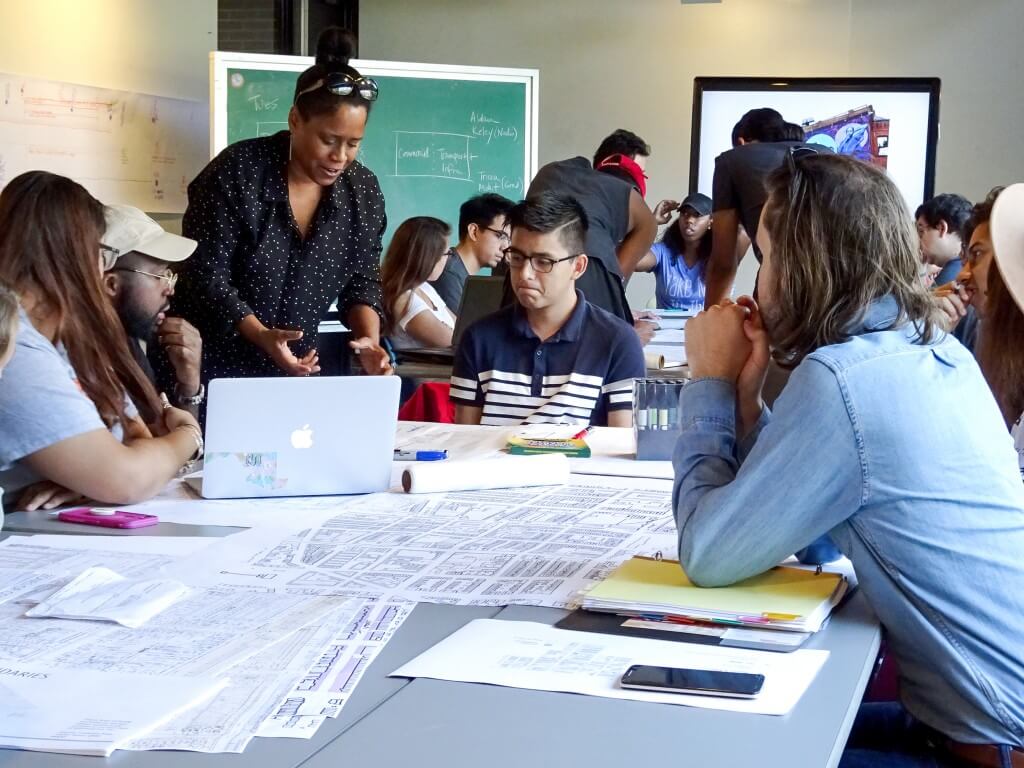- December 19, 2017
- By Liam Farrell
How does a neighborhood shift from a center of African-American culture to a flashpoint of urban strife to a real estate hotspot? That’s the question UMD architecture students investigated this semester as part of a course on the social, cultural and architectural history of 14th and U streets in Washington, D.C.
Their work from the class, taught by Assistant Professor Michele Lamprakos, will be on display at “Rebirth: Fifty Years After the 1968 Martin Luther King Assassination Riots,” an exhibition at the American Institute of Architects’ D.C. headquarters from March 26–May 26. The goal, Lamprakos says, is to show “how architectural fabric and social fabric reflect and reinforce each other.”
“It’s a way of learning urban and social history through architecture,” she says.
 Through site visits, research and analysis of historical maps and photographs, students detailed the many lives of the neighborhood around U and 14th streets, which after World War I boasted a strip of showrooms called “Auto Row” along with “Black Broadway,” where jazz, dance and billiard halls were a fountain of D.C.’s cultural life.
Through site visits, research and analysis of historical maps and photographs, students detailed the many lives of the neighborhood around U and 14th streets, which after World War I boasted a strip of showrooms called “Auto Row” along with “Black Broadway,” where jazz, dance and billiard halls were a fountain of D.C.’s cultural life.
The students looked at how this area southwest of Howard University was shaped by zoning, segregation, demographic shifts such as the Great Migration and transportation planning—from an infamous planned highway that was never built, but encouraged disinvestment, to the disruption and subsequent revitalization caused by Metro construction. Already declining after desegregation, the community was devastated when riots broke out at 14th & U following the assassination of civil rights leader Martin Luther King Jr., which citywide resulted in 12 deaths, hundreds of injuries and 1,400 businesses and homes destroyed.
Students also examined the neighborhood’s rebirth, spurred initially by the dedication of longtime residents and civil and religious institutions, and then transformed by gentrification in the late 1990s. Their projects describe how the recent influx of wealthier white residents and increasing property values have displaced previous inhabitants and changed the buildings themselves, from a homeless shelter turned into a high-end tile store to rehabbed auto showrooms reborn as luxury lofts.
“I was really interested in the whole adaptation concept,” says Hector Pereira ’18. “I feel like the history is kind of fading away. Classes like this help to relearn it.”
The course also showed students how buildings and neighborhoods are not shaped by unknown forces; rather, people, from residents to property owners to government officials, decide what does—and does not—happen.
“‘Decay’ sort of naturalizes it,” Assistant Professor Ariel Bierbaum told the students during a review of their work. “People made choices whether to make it broken.”
Tags
Student Experience